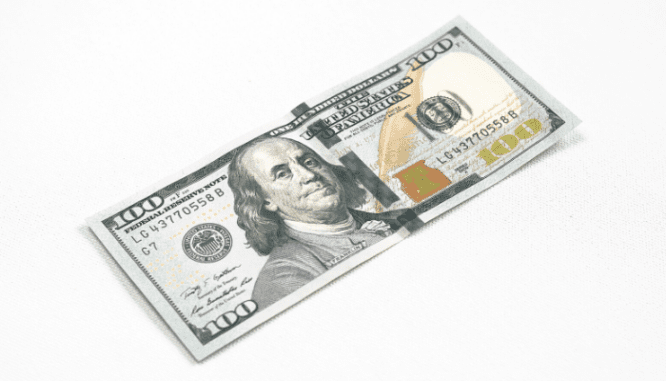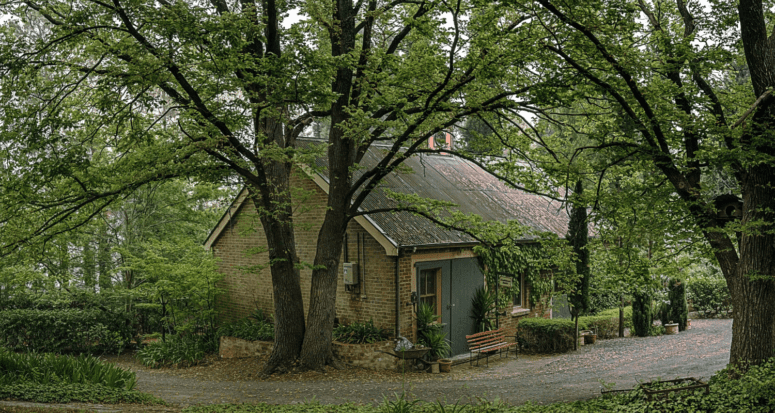You Can Buy a House Without a Down Payment: Here’s How
- Published on
- 4 min read
-
 Kim Dinan Contributing AuthorClose
Kim Dinan Contributing AuthorClose Kim Dinan Contributing Author
Kim Dinan Contributing AuthorKim Dinan is a writer, journalist and author. She's the outdoor news editor at Blue Ridge Outdoors and writes regularly for her local paper in Asheville, NC, covering everything from the necessity of home inspections to trends in the local economy. Kim is also the author of "The Yellow Envelope," a memoir about the time she sold her house and traveled around the globe.
The down payment is the single biggest hurdle to buying a house for most people. What if you didn’t have to have one in order to buy a house?
Guess what — in some cases, you don’t! There are a handful of federal programs that allow homebuyers to purchase a house with no money down. Let’s look and see if buying a house without a down payment is possible for you.

What’s the point of a down payment, anyway?
Lenders typically require down payments because they want buyers to have some equity in the house already, as it makes for a less-risky loan.
“Lenders want you to have skin in the game,” explains Melanie Hunt, a top real estate agent in Fort Worth, Texas, for more than 30 years. “When we went through foreclosures here, the people who had no-money-down loans were some of the first that walked because they had no skin in it.”
There are two types of loans that do not require a down payment — VA loans and USDA rural housing loans (more on both below.) These loans allow homebuyers to purchase a home without spending any cash out of pocket on a down payment.
But that doesn’t mean that there won’t be other costs associated with purchasing a home. Hunt says that while most of her clients are prepared for the down payment, the other costs associated with closing often catch them off-guard. “Those just grab them by surprise,” she says.
And just because you qualify for a no-money-down loan doesn’t mean that you can’t put money down anyway. “As the down payment approaches zero on any loan, add-on costs are high, often huge,” says Lou Barnes, Sr. Mortgage Loan Officer at Premier Mortgage Group. “It’s often advisable to wait and save until you have 3% down.”
All that said, you can still get a loan with no down payment if you and the house you’re buying meet certain parameters. “Other than elevated costs, there is no downside to 0% financing — except one,” says Barnes. “Homes have surprising expenses, and if you get into trouble, you won’t have enough equity to sell.”
To make sure that doesn’t happen, Barnes suggests having “hay bales” to protect you. “You should either have deep savings in retirement accounts that you could access if you had to, family back-up, excess disposable income — but if you have that, why not save a 3% to 5% down payment? — and discipline when it comes to spending and saving.”

No-money-down loan programs
VA loans
VA loans help service members, veterans, and eligible surviving spouses become homeowners. VA loans are provided by private lenders, such as banks, but the U.S. Department of Veterans Affairs guarantees a significant portion of the loan, making the lending terms more favorable. “Zero-down loans each have different characteristics,” says Barnes, noting that a VA loan “has the lowest mortgage insurance and is the easiest to qualify for.”
Parameters of VA loans
Credit score
There is no minimum credit score for VA loans; however, lenders making VA loans often look for at least a 620 FICO score. “VA loans are still feasible to 620 and below, but the cost is awful,” says Barnes.
Income
VA loans require borrowers to have a consistent, full-time income, though there is no income limit to qualify. The exact amount of income depends on the cost of the home you’d like to buy and the amount of debt you’re currently carrying.
VA borrowers must also demonstrate “residual income,” defined as the amount of money left over from the borrower’s paychecks after paying the mortgage, property taxes, and home insurance, and after federal and state withholdings, installments, and revolving debt are all taken out of the borrower’s gross monthly paycheck.
Residual income requirements depend on the number of people in the household, the cost of the mortgage, and the state in which you are buying a home. Check with a VA lender to determine your residual income requirements.
Loan limits
According to the VA website, the VA does not set a cap on how much you can borrow to finance your home. There are, however, limits on the amount of liability VA can assume, which will affect the amount of money you’ll be able to borrow.
The loan limits are the amount a qualified veteran with full entitlement can borrow without making a down payment, and they vary by county. The basic entitlement available to each eligible veteran is $36,000, and lenders will usually loan up to four times a Veteran’s available entitlement without a down payment as long as the veteran’s income and credit scores are in order and the property appraises for the asking price.
VA loan limits are the same as the Federal Housing Finance Agency’s limits. In 2020, those limits vary depending on your state and county.
Geographic limits
Properties must be purchased in the United States. This includes Puerto Rico, the U.S. Virgin Islands, American Samoa, Guam, and the Northern Mariana Islands.
How can funds be used?
VA home loans can be used in the following ways:
- To buy a home or a condominium unit in a VA-approved project
- To build a home
- To simultaneously purchase and improve a home
- To improve a home by installing energy-related features or making energy efficient improvements
- To buy a manufactured home and/or lot
- To refinance an existing VA-guaranteed or direct loan for the purpose of a lower interest rate
- To refinance an existing mortgage loan or other indebtedness secured by a lien of record on a residence owned and occupied by the veteran as a home.
Possible drawbacks of VA loans
The appraisal and inspection can be difficult with no-money-down loans, and sellers might reject your offers as a result. But Barnes says not to worry too much about that. “VA loans are slightly tougher on property condition, but it’s mostly things like paint and railings — nothing extreme,” he says.
If you’re using a VA loan for a second time, however, be aware of additional costs. “For VA loans, there’s a one-time funding fee paid at closing, and that fee increases by 50% for re-use of VA loans,” explains Barnes.

USDA rural housing loans
The USDA Single Family Housing Guaranteed Loan Program helps lenders work with low- and moderate-income families living in eligible rural areas to purchase a home. The program provides a 90% loan note guarantee to approved lenders in order to reduce the risk of extending no-money-down loans to eligible rural homebuyers.
Parameters of USDA rural housing loans
Credit score
The minimum credit score requirements for a USDA rural housing loan is 640 or more. For credit scores of 639 or below, a credit exception with supportive documentation confirming the circumstances leading to the low credit score is required. Loans with a credit score of 580 or below will not be approved. View the full requirements here.
Income
Income limits vary by state, county, and other factors, such as the number of members in the household. For a household of one to four people, the base income limit in 2019 was $86,850. For households with five to eight people, the base income limit bumps up to $114,650. The limit increases in counties with a higher than average cost of living. Check out this calculator to find out the income limits in your county.
Loan limits
Loan limits vary by state and fluctuate greatly. For example, the loan limit in King County, Washington (where Seattle is located), is $581,220. In Hamilton County, Ohio (where Cincinnati is located), the loan limit is $251,862. Loans financed through the program generally must be for homes 2,000 square feet or less.
Geographic limits
Applicants must purchase a home in an eligible area. Eligibility is based on USDA rural area requirements. Upon receipt of your application, the USDA will determine if the property you would like to purchase is eligible for the loan.
How can funds be used?
Borrowers must personally occupy the home as their primary residence. Funds can be used in the following ways:
- Buying a new or existing residential property to be used as a permanent residence. Closing costs and reasonable/customary expenses associated with the purchase may be included in the transaction
- Buying a site with a new or existing dwelling
- Making repairs or rehabilitation when associated with the purchase of an existing dwelling
- Refinancing of eligible loans
- Installing special design features or permanent equipment to accommodate a household member who has a physical disability
- Reasonable and customary connection fees, assessments or the pro rata installment cost for utilities such as water, sewer, electricity and gas for which the buyer is liable
- A pro rata share of real estate taxes that is due and payable on the property at the time of loan closing. Funds can be allowed for the establishment of escrow accounts for real estate taxes and/or hazard and flood insurance premiums
- Essential household equipment, such as wall-to-wall carpeting, ovens, ranges, refrigerators, washers, dryers, heating and cooling equipment as long as the equipment is conveyed with the dwelling
- Purchasing and installing measures to promote energy efficiency (e.g. insulation, double-paned glass and solar panels)
- Installing fixed broadband service to the household, as long as the equipment is conveyed with the dwelling
- Site preparation costs, including grading, foundation plantings, seeding or sod installation, trees, walks, fences and driveways
Possible drawbacks to USDA rural housing loans
One obvious drawback to a USDA rural housing loan is that the geographic limitations of the loan may prevent you from qualifying. USDA loans are also only for single-family homes, so if you’re hoping to buy a duplex to live in while you rent out the other side, you won’t be able to do that with this type of loan.
Another downside of a USDA rural housing loan is that, while private mortgage insurance is not required, two other kinds of mortgage insurance are. The first is a funding fee equal to 1% of the loan amount ($2,000 on a $200,000 mortgage). This fee is paid at closing and is usually rolled into the loan. The second is an annual fee equal to 0.35% of the loan amount ($58.33 per month on a $200,000 mortgage.) This fee is paid each month for the lifetime of the loan.
The takeaway
While it’s never a bad idea to put money down on your home (20% is the gold standard), if you are a veteran, currently serving in the military, or the surviving spouse of a service member — or if you are buying a home in a qualified rural area — one of these no-money-down loans may be a great option for you.
Header Image Source: (Michael / Unsplash)
